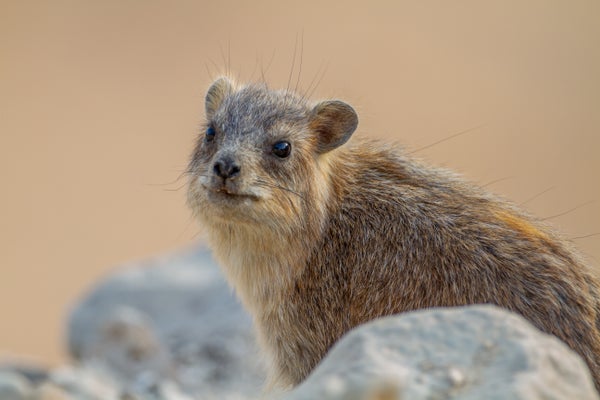They grow to about 20 inches long and weigh less than 10 pounds. So you might not think they’d be the closest living relatives to elephants. Meet the rock hyrax, sometimes called the rock rabbit or the dassie, common in rocky areas of Africa and the Middle East. They live in groups of up to 80 individuals.
“The hyraxes are a mammal that has a rare phenomenon, which is singing. We know a lot of birds sing, but we don’t have many mammals that actually perform a song, a complex song with different syllables coming in bouts. And these bouts are complex. And along the song, they get more and more complex, they get longer, they include more sounds.”
Biomusicologist Yishai Weissman from Bar-Ilan University and Hebrew University in Israel.
On supporting science journalism
If you're enjoying this article, consider supporting our award-winning journalism by subscribing. By purchasing a subscription you are helping to ensure the future of impactful stories about the discoveries and ideas shaping our world today.
“We’ve tried to understand the meaning of all this—why a hyrax would waste time and energy and expose himself to predators by singing such a loud song.”
Weissman and his team recorded the songs of male hyraxes during mating season, and they analyzed their structure.
“We found that the song is an advertisement for male quality. And in the song, the rarest thing, most interesting element, is the snort. It sounds like this—just like a snort. The whole song seems to be an introduction for these snorts.”
In the earliest parts of the song, snorts are relatively rare. But as the song continues, they become more common, resulting in a snort crescendo. The increase in snorts reflects the animals’ inner emotional state: as they become more excited or more aggressive, their songs become, well, snortier. And those snorts, according to Weissman’s findings, also become louder and harsher. The snorty study is in the journal Animal Behaviour. [Yishai A. Weissman et al., A crescendo in the inner structure of snorts: A reflection of increasing arousal in rock hyrax songs?]
Weissman thinks that the snort crescendo, together with the increasing harshness, make the songs impossible to ignore and grabs the attention of other hyraxes—which makes sense. Harshness is a salient feature in the sounds of crying newborns, barking dogs and frightened piglets. Acoustic harshness is routinely used in movie soundtracks to increase tension—and attention.
“It might be that these snorts are what’s keeping the listeners listening. A lot of times, the hyrax is just busy eating leaves, and they don’t even turn their heads to someone that’s singing. The snorts might be what serves as an attention grabber. And getting harsher and harsher might keep the listeners from droning off.”
For Weissman, this work isn’t only about understanding the nuances of hyrax communication. He believes that understanding why hyraxes sing, and how they construct their songs, could reveal something about the evolutionary origins of human speech and human music—which is no snorting matter.
—Jason G. Goldman
[The above text is a transcript of this podcast.]

